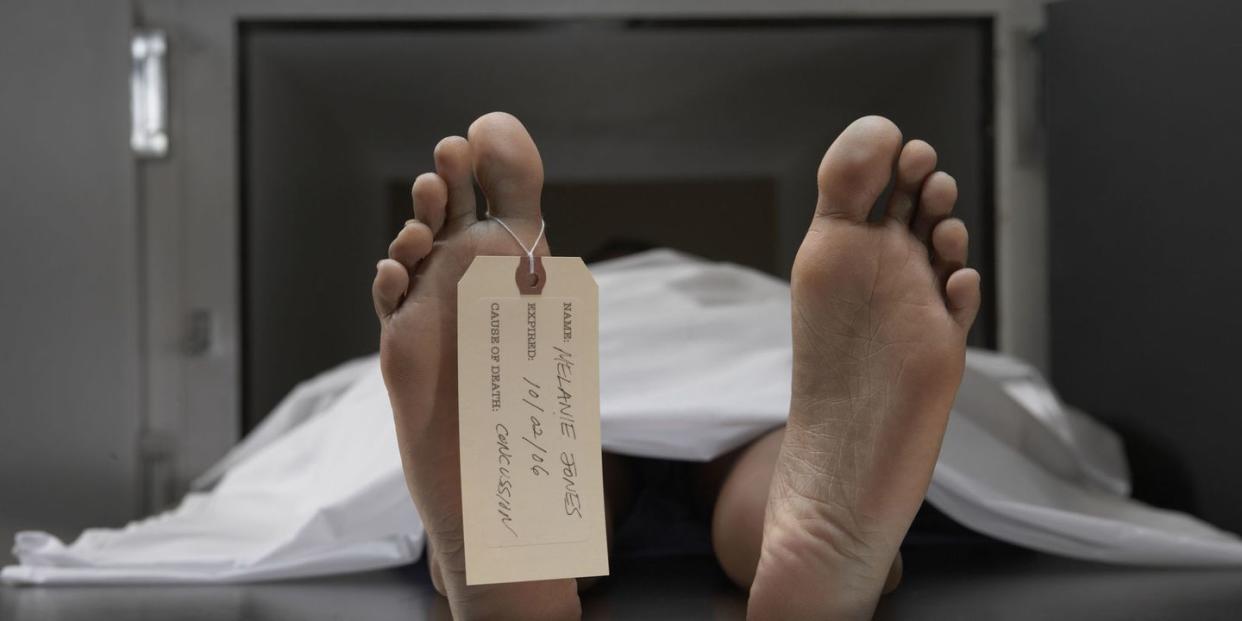What an Embalmer Wants You to Know About Death

In our culture of constant connection, ideas and opinions are hard to escape. Topics once considered taboo are digested over drinks at the pub or added to the wall of social media noise. Yet when it comes to death, conversation turns cold. We receive death completely unprepared. Death, despite its certainty, remains daunting and is an easy conversation to defer. We talk about death in hindsight as it happens to others. We don't talk about our own death. We don't understand our options. Weirdly, we don't like to acknowledge the inevitable.
According to Kevin Sinclair – a second generation embalmer – our culture approaches death via denial. "There is a sentiment that if you don't talk about death, it doesn't happen … I'm not afraid of death. It's death and taxes, it happens to all of us," he says.
To demystify the end of life, I spoke with Sinclair who has worked in funeral service most of his life and completed 40,000 embalming cases. From green burials to the process of embalming, he gives his insights into the business of death and the importance of discussing death during life:
Related Video: Going Green Isn't Just for the Living
Funeral service and burial are an important step for family and friends.
"It helps come to terms with the loss," says Sinclair. This is especially important in circumstances where the death is unexpected. "If someone has taken their own life, there are mixed emotions or if it is a quick death there is associated shock, and [the service] helps people come to terms with the death."
Last offices refer to the preparation of the deceased for burial or cremation.
Options range from bathing the body and closing the eyes to full embalming.
On average, bodies are buried or cremated two weeks after death.
Both burial and cremation require paperwork – yes, even in death there is life admin. To formally record the death, it must be registered by the Registrar of Births, Deaths and Marriages. This includes babies stillborn after the 24th week of pregnancy. In order to complete registration a medical certificate stating the cause of death must be supplied. Depending on where death occurred, the medical certificate may be issued by a hospital doctor or family doctor. Following registration, the registrar will issue a green certificate, which allows burial to go ahead.
Cremation requires sign off from two doctors before the body is taken to the crematorium.
"The first doctor is typically the family doctor who knows the medical history of the deceased, the second doctor is to double check and certify," says Sinclair. It can take some time to get all the paperwork in order. "If you can imagine trying to get a doctor with a busy surgery, it could be two or three days before you see them."
Embalming is the act of preserving the body and is used when burial or cremation is unable to be carried out immediately post death.
"We have a sliding scale of necessary treatments based on preservation, sanitation and presentation," he says. The approach is adjusted based on the needs of the deceased. "We can look after someone for a couple of days, a couple of weeks or months. Whatever is needed."
The embalmer needs to know the cause of death and medical history to properly treat the body and ensure the preservative fluid doesn't corrupt the body further. "This is where the skill of the embalmer is important. It's not just about anatomy. It's about chemistry as well. In life, the bacteria we are removing helps you with digestion, in death, there is nothing further for it to digest so it starts to look around… it will start to deteriorate and break the body down back to its natural constituents."
The hardest thing about the role of embalming is children.
"Or someone in your care who has been high profile – a victim of a disaster or in the news and you know more about them than the basic documentation. As an embalmer you need to have your professionalism switched on. It is likely the embalmer will have a family of their own and there are times when an embalmer will feel troubled."
Green burials do really exist.
These advocate for the use of products and processes that minimize the environmental impact of burials. This includes ethically sourced, locally produced coffins, no gravestones and no embalming. At the individual's request, funeral service technicians can arrange for facial presentation, dressing and mild cosmetics.
The funeral industry is changing all the time.
"There is a lot to be learnt from the movies," says Sinclair. "There are new ways cosmetics are being used, restorative arts, airbrushing, reconstruction of limbs and eyes, whatever is needed so that people can say their goodbyes."
Hair and nails do not continue to grow following death.
"[It's] a common misconception," says Sinclair. "It is the skin dehydrating – the nails aren't growing longer, it is the skin retracting which then makes the appearance of hair and fingernails slightly longer."
Working in the funeral service is rewarding.
"Originally I wanted to be a graphic designer, I've had lots of goals from starting my own business to running the school," says Sinclair. "But funeral service grabs you, you get engulfed … you blink and you've done ten years … it takes over your life. It's not just 9-5, it is 24/7. As far as I am concerned, I am just a guy who tries to help people."
('You Might Also Like',)